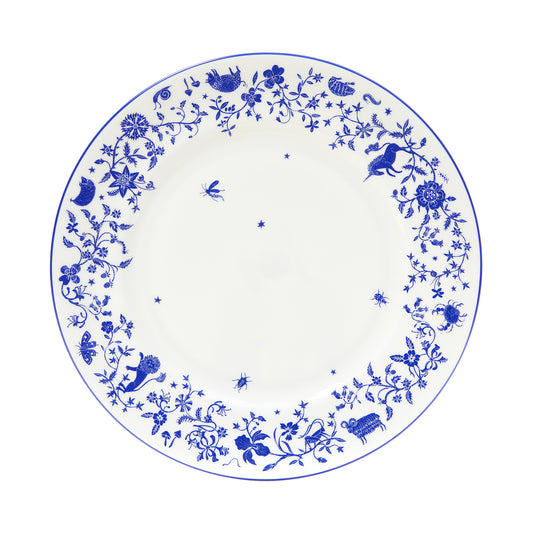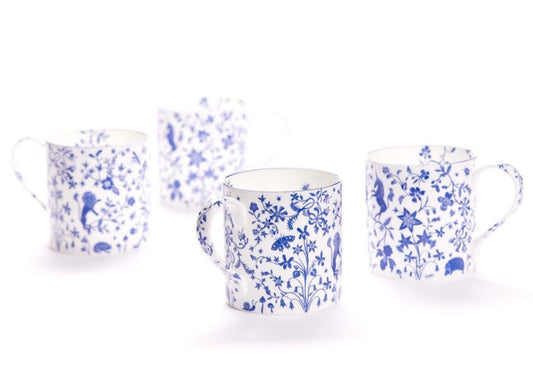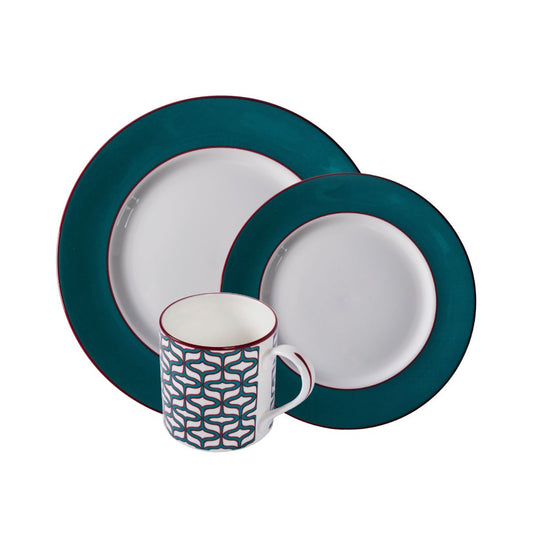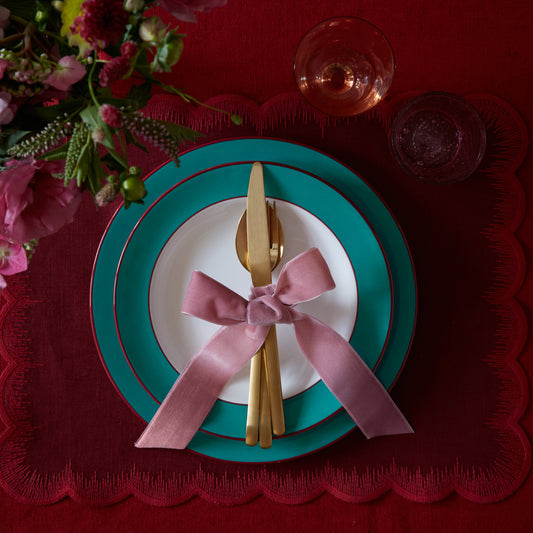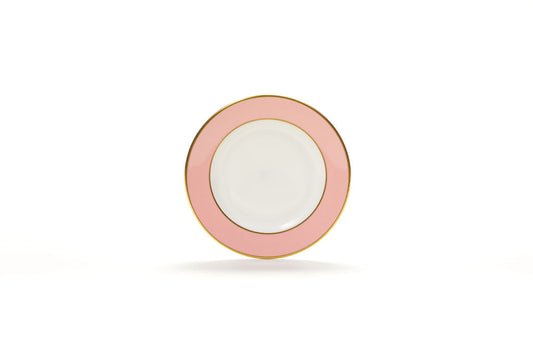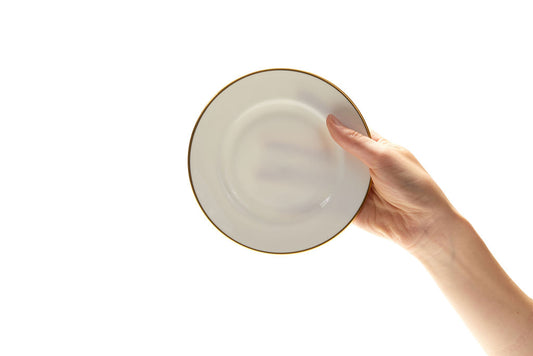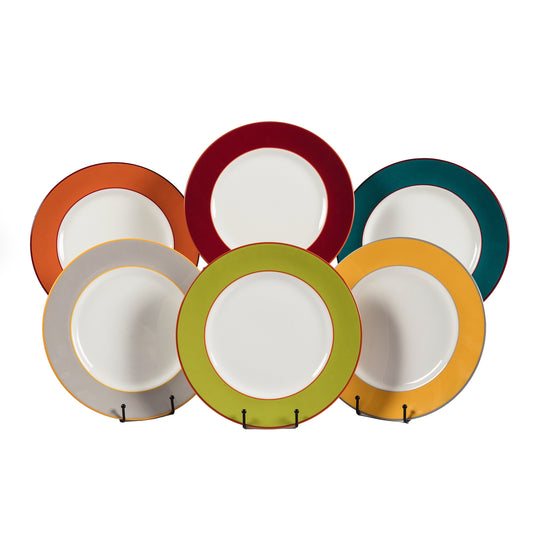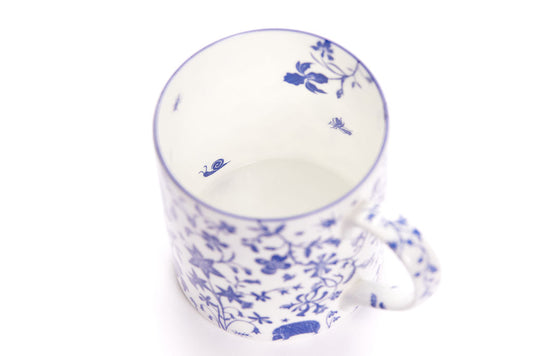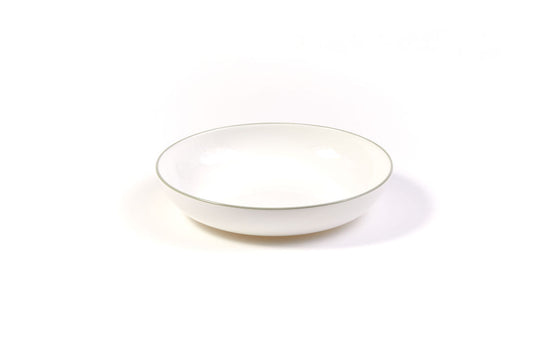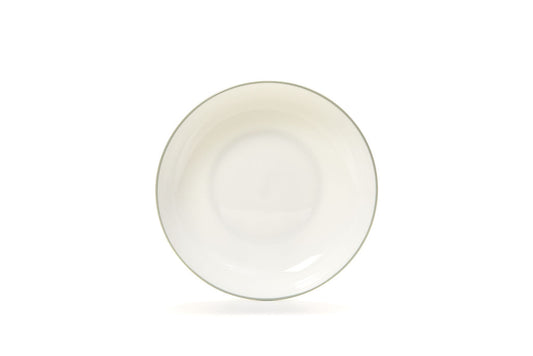Ceramics: a glossary
Ceramics: a glossary
The science behind ceramics is not for the faint-hearted. In fact, we dare you to open up the Wikipedia page and get through the first sentence without resorting to a dictionary.
Here we offer a brief glossary that explains why porcelain isn't pottery and bone china isn't 'real' porcelain. Confused yet? Read on.
The big 'P's
Pottery: a generic term that describe objects that have been formed with clay, hardened by firing and decorated or glazed. Usually the term does NOT include porcelain (though technically it could do).
Porcelain: a ceramic material, characterised by whiteness, hardness and vitrification (the transformation into glass - making it impermeable to water). It is made by combining kaolin and petuntse, fired at extremely high temperatures (1750°C).
Porcelain was made in China as early as the 7th century, but the first 'true' porcelain was made in 13th century china in Jingdezhen where it continues to be made.

Some say the western name derives from Marco Polo (1254 - 1324) who compared porcelain to the cowrie shell, known as 'porcellana' in Italian.
Differences
The main points of comparison between pottery (e.g. earthenware and stoneware) and porcelain (e.g. bone china) is the temperature at which the clay is fired and the resulting strength, water resistance, durability and opacity of the finished products.
The quality of the products will be dependant on the purity of the clay but as a general rule, stoneware and porcelain (particularly bone china) are the two more durable forms of ceramic, which are commonly used as tableware at home.
The Basics
Kaolin: a clay of fine white aluminium silicate mixed with petuntse to form porcelain. Named after the mines at Gaolin Mountain in northeast Jingdezhen in south China.
Petuntse: a feldspathic rock made up of quartz, feldspar and mica ground up into a powder. Mixed with kaolin (clay) to create porcelain.
Glaze: a glassy mixture applied to ceramics to make them impermeable to liquids.
Frit: a glassy combination of soda, sand, gypsum and lime heated together , melted and ground to a powder. Used in the manufacture of soft-paste porcelains.
Biscuit porcelain: fired but unglazed porcelain. 'Biscuit' means twice fired and refers to the fact that glass frit has already been fired once before being mixed with clay, and then moulded or 'thrown' into ware and fired for a second time.
Flatware: plates and dishes, as opposed to holloware vessels such as jugs
Hollowware: vessels of any shape, as opposed to flatware such as plates
Types of 'Porcelain'
BONE CHINA: a type of 'soft-paste' porcelain perfected by Josiah Spode in England in 1797 containing 50% bone ash from cattle, 25% Cornish china clay (kaolin) and 25% Cornish china stone (feldspathic material or petuntse). Known for its translucency when held to the light and resilience to chipping.
Soft-paste porcelain: a type of porcelain made without kaolin designed to imitate the original Chinese porcelain. Made by mixing a malleable white-firing clay with glassy 'frit' fired at lower temperatures (1150-1200°C).
Hard-paste porcelain: usually refers to European porcelain, in contrast to 'soft-paste' bone china in England and 'true' Chinese porcelain.
First manufactured by Meissen in Germany in 1710 when Johann Friedrich Böttger invented a creamy white porcelain that fuzed local Saxon kaolin (china clay) with calcined alabaster (burnt gypsum). The mixture was improved in 1724 by replacing alabaster with feldspar and quartz to create a new and whiter hard-paste porcelain that looked more like the original oriental wares.
Types of 'Pottery'
Earthenware: a clay that fires at low temperatures (800-1000°C) and is porous unless covered with a lead glaze.
Terracotta: a red clay lightly fired (type of earthenware).
Tin-glazed earthenware: a type of earthenware covered with a lead glaze, made white and opaque with by adding tin, fired at a low temperature. e.g. maiolica, faience and delftware.
Faience: a term used to describe tin-glazed earthenware from France, Portugal, Germany and the Netherlands - derived from 'Faenza', an Italian town that became a centre of production.
Delft ware: a type of tin glazed earthenware made in the Netherlands. A light-coloured pottery body with overglaze decorations in cobalt to imitate Chinese blue and white porcelain.
Delftware: faience or tin-glazed earthenware made in Britain. Its name acknowledges the influence of Dutch ware. It became known as 'galley ware' in the 16th and 17th centuries after being brought over from Italy in ships.
Creamware: a cream coloured earthenware with a lead glaze introduced in Staffordshire from the 1750s. In 1765 Wedgwood named his 'Queen's ware' after the successful completion of his first commission for Queen Charlotte.
Stoneware: opaque ceramics that vitrify when fired between 1100-1200°C. e.g. black basalt and jasperware.
Jasperware: a fine stoneware tinted or dipped in a variety of colours and left unglazed. Invented and perfected by Josiah Wedgwood in 1775. One of the last Wedgwood products to still be made in England.
Decoration
Transferware: ceramics that have had a pattern applied by transferring the print from a copper plate to a specially sized paper and finally to the ware. While produced primarily on earthenware, transfer prints are also found on ironstone, porcelain and bone china.
The process was developed in Staffordshire in the second half of the 18th century in response to the need of the newly emerging British middle class for less expensive tableware. At first, the transfer patterns were copied from the blue and white Chinese designs found on the hand-painted porcelain that was popular in the 18th century but later potters began to incorporate British, European and American features into their designs.
The new technology, fuelled by the Industrial Revolution, made Staffordshire the centre for pottery and porcelain making and development for more than 200 years.
Ceramic decal: a transfer system that is used to apply pre-printed images or designs onto ceramics.
A decal typically has three layers: (1) the colour or image layer with the decorative design; (2) the covercoat that is a clear protective layer and may include glass; and (3) the backing paper on which the design is printed by lithography (or 'screen printing').
The decal is placed colour-side down on the ware and rubbed firmly to remove any air bubbles before the paper is sponged off. The 'covercoat' will burn away in the firing leaving vivid colour designs.
Lithography: originally, the method of reproducing a decoration drawn on limestone treated so as to repel the ink except where it is required for printing. The use of lithographic printing on ceramics is done by painting photocopied images (or films) with a mixture of coloured pigment and adhesive.
Screen printing: a printing technique where a mesh is used to transfer ink onto a substrate, except in areas made impermeable by a blocking stencil. A blade or squeegee is moved across the screen to fill the open mesh apertures with ink, and a reverse stroke then causes the screen to touch the substrate momentarily along a line of contact. This causes the ink to wet the substrate and be pulled out of the mesh apertures as the screen springs back after the blade has passed. Only one colour can be printed at a time, so several screens are used to produce a multicoloured image or design.
Underglaze: painted or printed decoration applied before a piece is glazed and fired, giving the decoration a transparent, protective surface.
Translucent enamels: coloured glass for overglaze decoration. Mixed with pigment derived from metallic oxides, the colours were limited (typically green and iron-red) and semi-translucent. The technique became known as 'famille verte' in Europe.
Opaque enamels: coloured glass used for overglaze decoration. Mixed with various pigments derived from metallic oxides to create tones that can be layered for varying effect. From the 1720s, opaque enamels replaced earlier transluncent over-glaze colours. The technique became known as 'famille rose' in Europe.
Chinoiserie: European interpretation of Chinese art and design.
Harlequin set: a deliberately mismatched table, tea or dessert service.
Lustre A type of decoration originally developed in Persia which leaves a thin layer of metal on the decorated portions of pottery. Similar to using gold leaf, it comes as a liquid and is a third firing completed after glaze. Common varieties are Pearl, Copper, Gold, Silver, and Platinum.



